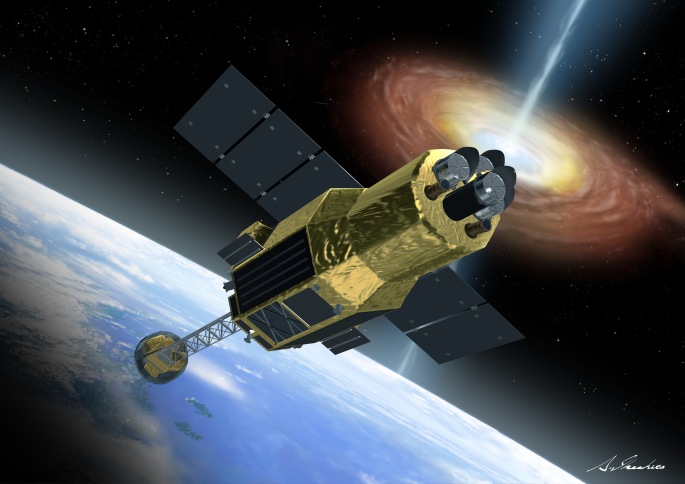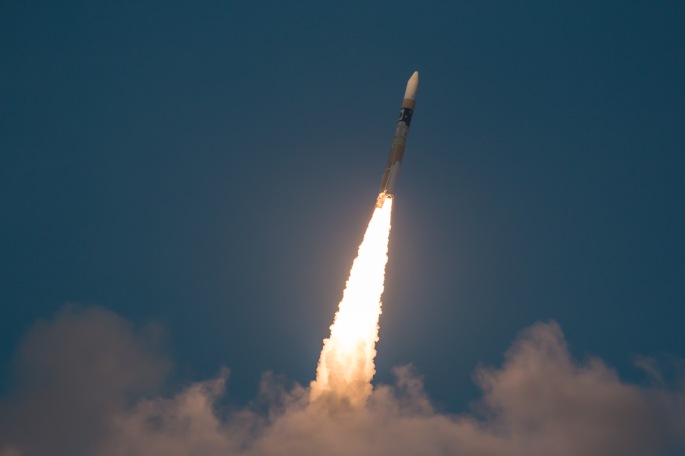Japan successfully launched an H-2A rocket carrying the next generation of X-ray space observatory into orbit on Wednesday

Space news (February 17, 2016) – The Yoshinobu Launch Complex at Tanegashima Space Center in Kagoshima Prefecture in southwestern Japan –
Anxious astronomers, engineers, and scientists in Japan, Canada and NASA headquarters watched nervously Wednesday as a two-stage H-2A carrier vehicle carrying years of their work and dedication rose slowly from Tanegashima Space Center in Japan.

The H-2A rocket carried the next generation of X-ray space observatory “Hitomi”, formerly known as the Astro-H satellite, to its launch point 580 kilometers above the surface of the Earth.
“We see X-rays from sources throughout the universe, wherever the particles in matter reach sufficiently high energies,” said Robert Petre, chief of Goddard’s X-ray Astrophysics Laboratory and the U.S. project scientist for ASTRO-H. “These energies arise in a variety of settings, including stellar explosions, extreme magnetic fields, or strong gravity, and X-rays let us probe aspects of these phenomena that are inaccessible by instruments observing at other wavelengths.”
As part of the launching of Astro-H, the satellite had been recently renamed “Hitomi”, which means “pupil of the eye” in Japanese. Using this eye-in-the-sky, astronomers around the world will study neutron stars, galaxy clusters and black holes in a wider bandwidth of x-rays from soft X-ray to the softest Gamma-ray.
“This has been an extraordinary undertaking over many years to build this powerful new X-ray spectrometer jointly in the U.S. and Japan,” said Goddard’s Richard Kelley, the U.S. principal investigator for the ASTRO-H collaboration. “The international team is extremely excited to finally be able to apply the fundamentally new capabilities of the SXS, supported by the other instruments on the satellite, to observations of a wide range of celestial sources, especially clusters of galaxies and black hole systems.”
“Hitomi” is the sixth in a series of X-ray astronomy satellites designed and engineered by Japan Aerospace Exploration Agency’s (JAXA) Institute of Space and Astronautical Science (ISAS). All of the satellites in the series have been extremely successful X-ray observatories that have contributed to human knowledge of the cosmos. The latest satellite to launch into space is expected to offer breakthroughs in understanding and knowledge of the evolution of the largest structures observed in the cosmos.
Canada’s connection to “Hitomi” is the Canadian ASTRO-H Metrology System (CAMS), which sharpens blurry images using lasers and detectors to correct for the movement of the boom used to support the ends of the extremely long detectors on the satellite. Needed to observe the highest-energy x-rays, the CAMS system was built in consultation with Canadian scientists and researchers by Ottawa-based Neptec.
“The technology used in the SXS is leading the way to the next generation of imaging X-ray spectrometers, which will be able to distinguish tens of thousands of X-ray colors while capturing sharp images at the same time,” said Caroline Kilbourne, a member of the Goddard SXS team.
Hitomi starts work
Ultimately “Hitomi” was designed, engineered and launched by the three partners in this venture to conduct a survey of black holes and distant galaxies. They will use the results of the survey to help lift the veil of mystery surrounding the evolution of the most mysterious celestial objects in the cosmos. This is just the start of the space mission of “Hitomi”, once this initial mission concludes, we expect the newest automated-envoy of the human journey to the beginning of space and time to offer insights into the way matter acts in extreme gravitational fields, study the rotation of spinning black holes and the internal structure of neutron stars, and the dynamics and detailed physics of relativistic jets during its mission.
You can follow the space mission of “Hitomi” here.
Learn more about the things we learn about the cosmos each day here.
Learn more about Japan’s Institute of Space and Astronautical Science.
Learn more about the future space missions of the Japan Aerospace Exploration Agency.
Read about the recent observation of gravitational waves by astronomers.
Learn about the things astronomers discovered recently about young, newborn stars.
Learn more about the things NASA’s New Horizons spacecraft is telling us about Pluto and its moons.

3 thoughts on “New Satellite “Hitomi” (Pupil of the Eye) Observes Wider X-ray Universe”